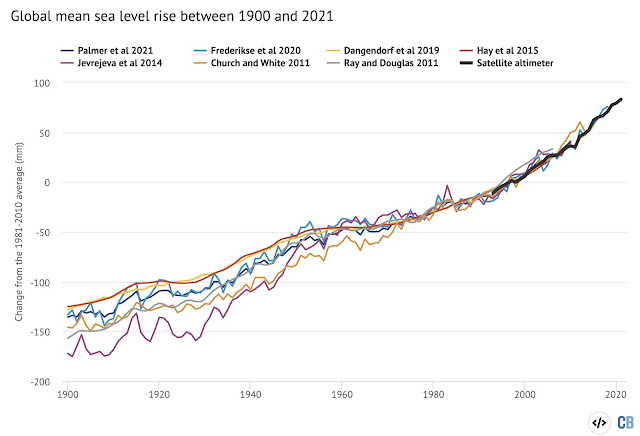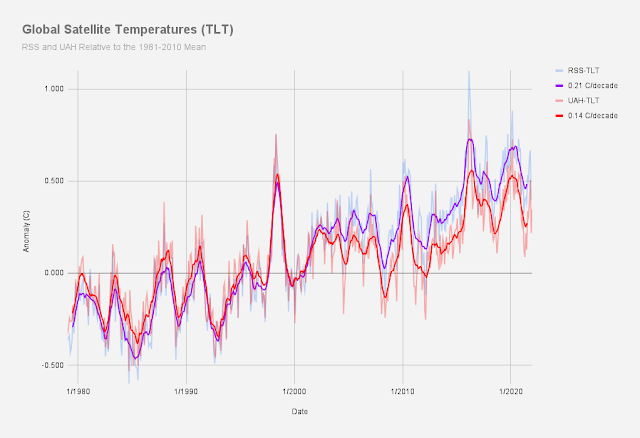Satellite Data Tampering by John Shewchuk

The graph below from John Shewchuk is intended to show that models predict too much warming compared to satellite data. Shewchuk claims that the red line is the average of 102 IPCC CMIP5 model runs for the surface through 50K feet. In all likelihood, this is just lifted from graphs of model-observation comparisons that John Christy has plotted in the past. Shewchuk claims the blue line is UAH satellite observations for the total troposphere layer (TTT). The problems with this graph are numerous, and many of the problems are inherited from Christy's graph (problems with his comparison are well-documented ). The two time series are separated from each other even in 1980 to exaggerate the differences between the two (even if the trendlines do intersect at 1980). The 102 model runs are not shown, only the model mean, and the 95% confidence interval is also not shown, so we have no idea what the spread in the model runs might be. But Shewchuk has added his own dishonest twist to this g...
%20(3).png)



